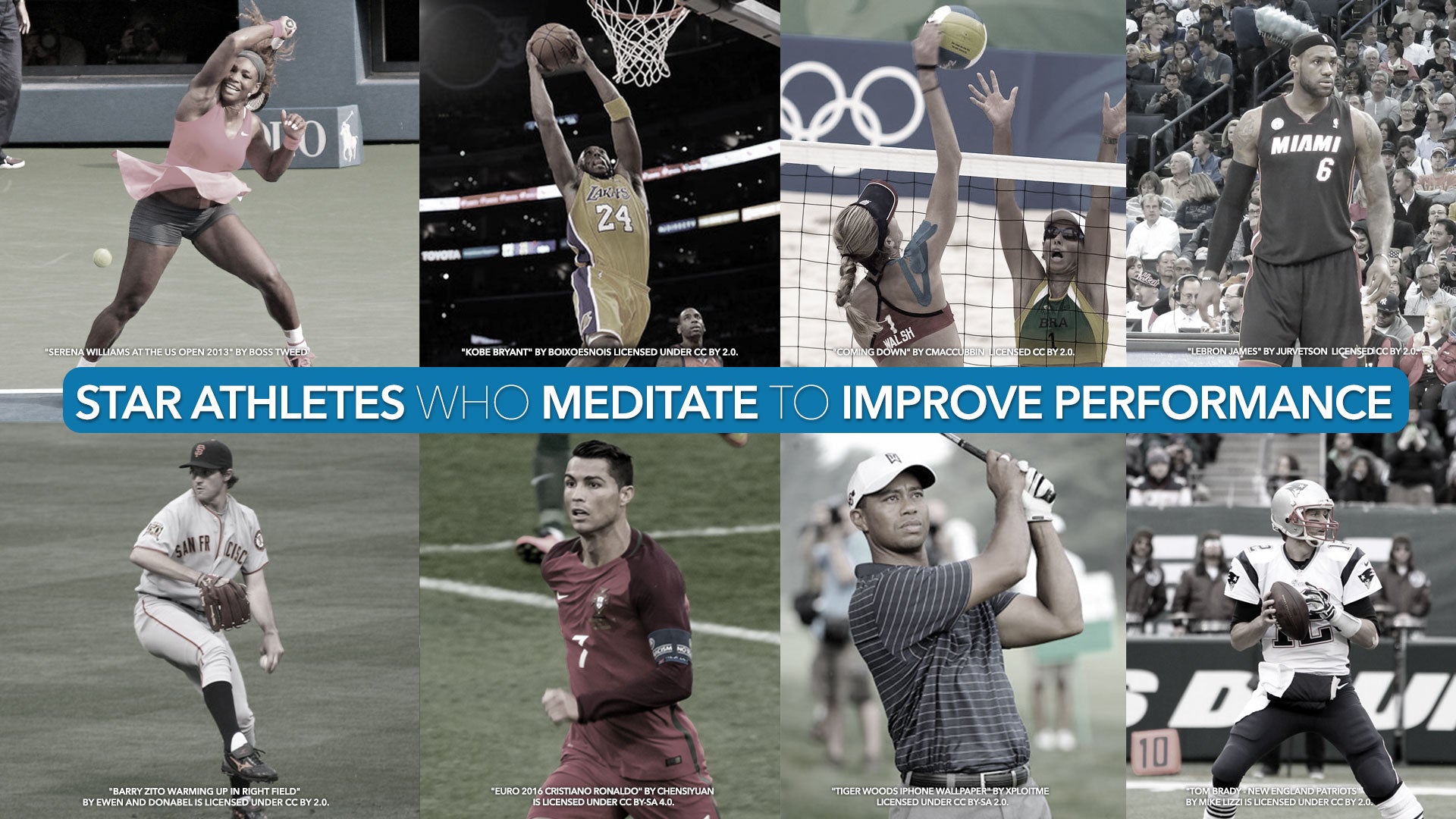Fortunately, there are tools like meditative mindfulness that you can use to help manage your chronic pain. According to Eastern practices, mindfulness helps us to refocus our minds, increasing our bodily awareness and inner sensations. It helps us heal the mind and body, re-wiring connections.
Today we'll show you how to use mindfulness to cope with chronic pain. We will also provide helpful advice on how you can start using mindfulness to manage your pain.
Does Mindfulness Help with Pain Management?
By learning to focus on the present moment, you can begin to break the cycle of chronic pain. Meditation uses different neural pathways to process pain, allowing you to physically become better at managing it.
In addition, mindfulness can help you cope with the stress and anxiety that is often a catalyst for chronic pain. Stress and anxiety can make your pain physically worse. By managing your stress and anxiety levels, you can help reduce your overall pain.
Mindfulness can help you to connect with your body in a new way. When you're more in tune with your body, you can better understand your pain and how to cope with it.
Research on Mindfulness and Chronic Pain
Science has recently been able to connect mindfulness and pain. There is a growing body of scientific research on the benefits of mindfulness for coping with pain and chronic pain management. We aren’t just saying mindfulness works. We can actually find studies that prove mindfulness improves chronic pain!
A recent study published in 2015 found that 45 minutes of mindfulness meditation per day can improve pain management levels. Participants were noted as feeling more in control of their pain. The practice also increased their pain acceptance, the process of learning to live with discomfort.
Other benefits found in the study included lowered depression and anxiety and also an increased sense of psychological well-being.
How to Use Mindfulness to Cope with Chronic Pain
Let's now look at some ways you can use mindfulness for pain. There are many different mindfulness practices you can use to combat chronic pain. This is helpful because different people will benefit from different mindfulness practices. Read on to learn more about the different mindfulness techniques and see what works best for you!
Perform Daily Breathwork Exercises
An easy way to use mindfulness is to focus on your breath. When you're in pain, it's common to hold your breath or take shallow breaths. This can actually make your pain worse by worsening your posture and increasing back and neck discomfort, and it also inhibits sleep and immune health.
Instead, try to focus on taking deep, conscious breaths. Breathwork exercises can help you to control your pain by teaching you how to not just breathe properly but can help regulate the body and improve your overall health.
Use Body Scans to Identify Root Causes of Your Pain
Body scans can help you to more accurately identify the locations in the body that are in pain to help the body and mind’s natural ability to heal. Start by focusing on your feet and then work your way up to your head. Pay attention to how your body feels as you move through each part. As you scan your body, try to relax each muscle group.
This will help to ease any tension you're holding in your body, which can make pain worse. By paying attention to your body, you may be able to pinpoint where your pain is coming from. This can be helpful in finding treatments that work to relieve your specific pain.
Practice Mindfulness During Everyday Activities
You don't have to set aside time each day to practice mindfulness. You can actually incorporate it into your everyday activities. This makes mindfulness achievable in virtually any scenario.
For example, try to be mindful as you brush your teeth or take a shower. Pay attention to the sensation of the water on your skin and the smell of the soap. This will help you to focus on the present moment. It will help you to take intense focus away from aches and pains.
Find a Comfortable Place to Sit or Recline
If you prefer peace and quiet during your meditation sessions, getting comfortable is a must. Make sure your environment is free from distractions, such as loud noises or bright lights. This will help you to focus on your mindfulness practice. A comfortable area will also lessen pain symptoms.
You can also try using props, such as blankets or pillows, to help you get relaxed. If you have trouble finding a way to get comfortable, consider using our Ungloo products. We can provide you with lumbar-supportive chairs, cushioned seats, and more to help decrease your pain. The Ungloo Box meditation chair offers comfort and convenience, making it easy to relax and ease chronic pain.
Start Small and Build Up Over Time
Mindfulness doesn't have to be a long, drawn-out process. In fact, it's best to start small and gradually increase the length of your sessions.
If you're new to mindfulness, start with just a few minutes each day. As you get more comfortable with the practice, you can increase the length of your sessions. Aim for a goal of around 20-30 minutes per day.
You may not see results immediately, but you may start to see a reduction in your pain and stress levels over time.
Use Kundalini Yoga to Rewire Your Body and Brain
Kundalini yoga is a type of mindfulness practice that can help to ease pain. This form of yoga focuses on breathwork, meditation, and movement. It can help to improve your flexibility, strength, and range of motion.
Kundalini yoga can help to retrain your nervous system, improve circulation, and unblock your chakras. The practice can be helpful in managing chronic pain and negative thoughts.
Additionally, kundalini yoga has great effects on your spinal health. Dr. Sheri Dewan, who is a neurosurgeon and yoga enthusiast, praises kundalini yoga for its health benefits. She is a big believer that kundalini yoga can improve back pain and nervous system health.
Practice Mindfulness When You're in Pain
When you find yourself in pain, try to practice mindfulness for at least 10-15 minutes. This can be difficult when you're hurting, but it may offer you some quick relief. Instead of popping a pill, sit down and focus on your breath.
Pay attention to how your body feels and try to relax each muscle group. If you can, focus on a specific area of your pain and imagine breathing healing relief into the area. Picture your pain dissipating and your body healing. This visualization method can help ease your discomfort from chronic pain.
Use Mindfulness to Help You Sleep
You may find that mindfulness can help improve your sleep. Pain can make it difficult to get a good night's sleep. If you find yourself tossing and turning, try using meditation to help you relax into a deep slumber.
Start by lying on your back in a comfortable position. Close your eyes and focus on taking slow, deep breaths from your belly. This will help you to generate theta brain waves, which naturally occur during light sleep.
Make sure to breathe in and out of your nose slowly. Allow your mind to wander and release any thoughts or painful sensations that you're experiencing. If your mind starts to race, simply observe the thoughts and then let them go. Picture yourself drifting off into a deep sleep.
Talk to Your Doctor about Combining Meditation with Treatment
If you have a doctor who is open to alternative healing methods, talk to them about combining meditation with your current treatment plan.
Your doctor may be able to offer suggestions on how to get started. He or she may also be able to offer guidance on how to use mindfulness in combination with treatment.
Keep in mind that mindfulness is not a cure for chronic pain. But, it can be an effective tool to manage your symptoms and improve your quality of life. With regular practice, you may find that mindfulness provides you with much-needed relief.
Use the Ungloo Box to Ease Your Chronic Pain
Mindfulness can be a helpful tool for managing discomfort. And we hope our article helped you learn how to use mindfulness to cope with chronic pain.
If you're struggling with chronic pain, give mindfulness meditation a try. Experiment with the different mindfulness techniques to find what works best for you. Try breath work, supportive chairs, and a style of yoga that meets your needs. You might just find the relief that you've been searching for. To get started on your journey to ease chronic pain check out our meditation chairs here.



